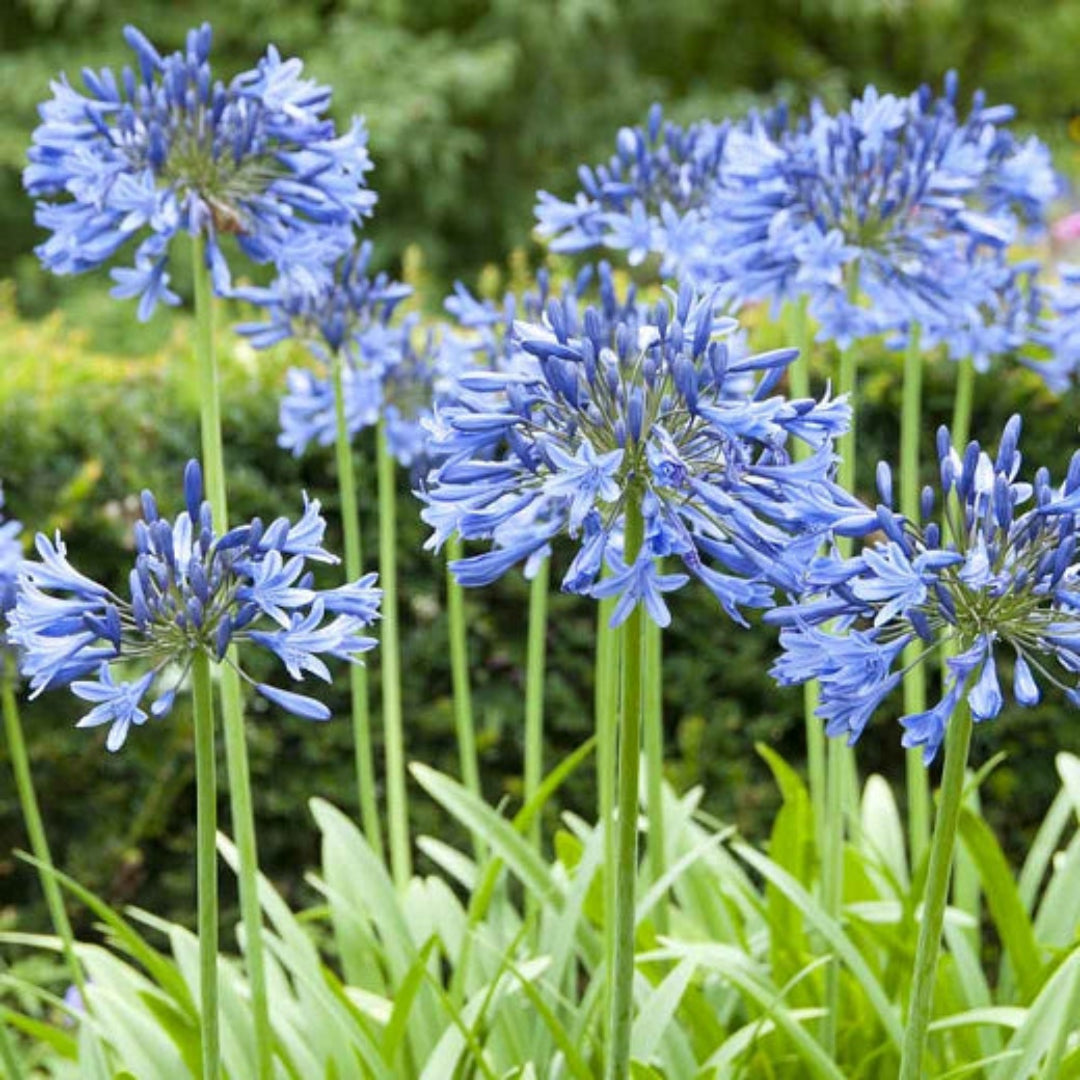Agapanthus Expanding Problems: Soil, Sunlight, and Watering
Agapanthus Expanding Problems: Soil, Sunlight, and Watering
Blog Article
Grasping the Art of Agapanthus Treatment: Crucial Actions for Healthy Development and Lively Blossoms
In the realm of cultivation, the farming of agapanthus stands as a gratifying undertaking for those who seek to nurture these elegant flowering plants. With their striking flowers and graceful vegetation, agapanthus has recorded the attention of garden enthusiasts worldwide. Nevertheless, accomplishing ideal growth and vivid blossoms needs a nuanced strategy that includes numerous crucial steps. From choosing the best variety to grasping pruning techniques, the trip towards growing flourishing agapanthus plants is multifaceted and holds the crucial to unlocking the full possibility of these botanical gems.

Selecting the Right Agapanthus Variety

When selecting the appropriate Agapanthus selection for your yard, think about elements such as environment suitability, flower shade, and development habit. In addition, consider the environment in your area to make certain the Agapanthus selection you choose can prosper in your certain problems. Comprehending the growth habit of various Agapanthus selections is important for correct positioning within your yard.
Ideal Growing Conditions
Thinking about the optimum environmental needs is important for successful Agapanthus farming. Agapanthus plants are delicate to cold temperatures and need to be shielded from frost during winter season months.
To make sure healthy growth and lively blossoms, plant Agapanthus bulbs at a deepness of about 2-4 inches and area them 8-12 inches apart. Including raw material, such as compost, to the dirt can enhance drainage and fertility, advertising robust origin growth. Mulching around the base of the plants assists maintain dampness and subdues weed development. Routine watering is essential, particularly throughout the expanding period, to keep the dirt continually damp however not soaked.
Watering and Feeding Tips
Keeping proper wetness levels and giving important nutrients are key elements in the treatment routine for Agapanthus plants. When it comes to sprinkling Agapanthus, it is essential to strike an equilibrium. These plants prefer consistently damp dirt yet are at risk to root rot if overwatered.
Fertilizing Agapanthus is crucial for advertising healthy and balanced growth and respected blossoms. Use a well balanced plant food, such as a 10-10-10 formula, in the very early spring as brand-new growth emerges. Repeat this application every 6-8 weeks throughout the expanding period. Stay clear of excessive fertilizing, as it can bring click for more info about lavish foliage at the expense of blossoms. Always adhere to the maker's directions for proper dilution and application methods. By following these watering and feeding suggestions, you can guarantee your Agapanthus plants prosper and generate vivid, lasting flowers.
Trimming Techniques for Agapanthus
Trimming Agapanthus plants at the suitable times and with proper methods is crucial for maintaining their health and wellness and promoting optimum growth and blooming. The ideal time to prune Agapanthus is in late wintertime or very early springtime before their website brand-new development arises. Beginning by removing any type of dead or yellowing fallen leaves near the base of the plant. Cut them as short as feasible without damaging the arising shoots.
For flowered stems, wait till the blooms have perished and afterwards trim them back to the base. This not only tidies up the plant's appearance however also motivates the growth of new flower buds. Deadheading spent flowers can additionally reroute the plant's power right into producing more blossoms instead of establishing seeds. Nevertheless, if you intend to gather seeds for breeding, leave some flowers to mature and completely dry on the plant.
Bear in mind to utilize tidy, sharp devices to make accurate cuts and decrease the danger of presenting conditions. Agapanthus. Routine pruning will certainly aid maintain your Agapanthus looking healthy and balanced and neat while making sure an abundant display screen of beautiful blooms
Managing Usual Insects and Conditions
After making sure correct pruning strategies for Agapanthus, it is important to resolve common bugs and diseases that can influence the wellness and vitality of these plants. One common insect that affects Agapanthus is the Agapanthus gall midget.
An additional typical problem is fungal fallen leave spot, which offers as dark lesions on the leaves. To stop fungal diseases, make certain good air flow around the plants, avoid overhanging watering, and remove any kind of contaminated leaves without delay. Furthermore, Agapanthus plants can struggle with origin rot if they are grown in inadequately draining soil. To stop this, plant Agapanthus in well-draining soil and stay clear of overwatering. By being vigilant and taking timely activity versus diseases and pests, you can assist your Agapanthus plants thrive and generate vibrant blooms.

Verdict
To conclude, understanding the art of agapanthus treatment includes choosing the best selection, providing suitable growing conditions, proper go to the website watering and feeding, suitable pruning techniques, and resolving common pests and illness. By adhering to these important actions, you can make sure healthy and balanced development and vibrant flowers for your agapanthus plants. Keep in mind to on a regular basis check and keep your plants to promote their general health and long life.
To make sure healthy growth and lively blooms, plant Agapanthus light bulbs at a depth of regarding 2-4 inches and space them 8-12 inches apart. By following these watering and feeding suggestions, you can ensure your Agapanthus plants prosper and produce dynamic, long-lasting blooms.
One common pest that influences Agapanthus is the Agapanthus gall midge. Furthermore, Agapanthus plants can experience from root rot if they are planted in badly draining soil. By complying with these essential steps, you can guarantee healthy and balanced growth and vivid blooms for your agapanthus plants.
Report this page